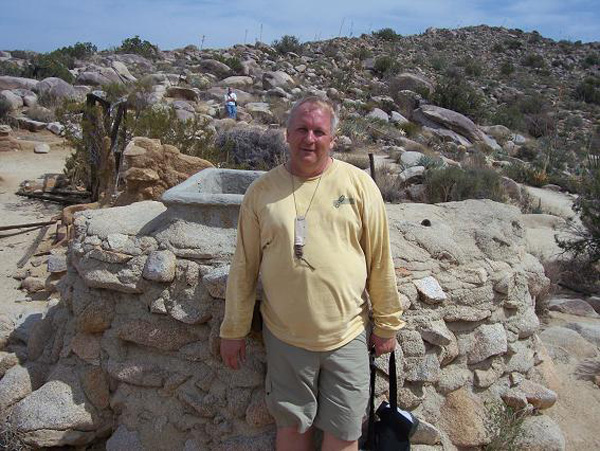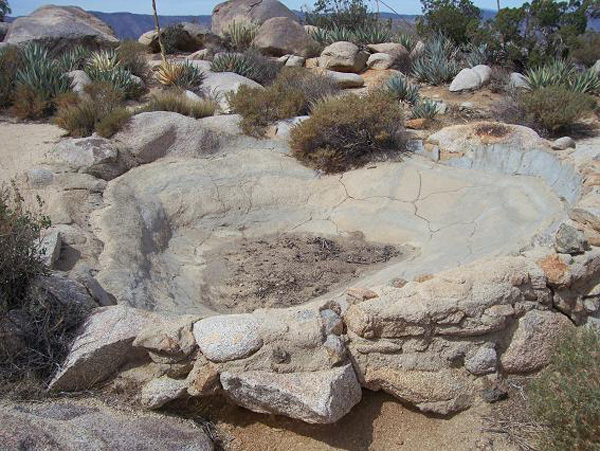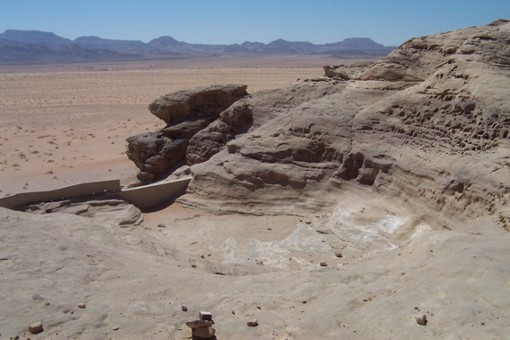
An adequate freshwater supply is a basic necessity. Obtaining water can be especially challenging in deserts. The following photos illustrate a few simple methods for capturing and storing water in arid regions.

Interesting history lesson from Nabataea.net: “The Nabataeans were experts at collecting water and storing it in underground cisterns. All along their caravan routes, secret water collection systems collected water and stored it for later use. The ancient historian Diodorus noted: “For in the waterless region, as it is called, they have dug wells at convenient intervals and have kept the knowledge of them from people of all other nations, and so they retreat in a body into this region out of danger. For since they themselves know about the places of hidden water and open them up, they have for their use drinking water in abundance.” [Their website explains how the Nabataeans invented waterproof cement hundreds of years before the Romans.]



Image source: Ghost Mountain Hike
Image source: In the Studio with KnittingAmazon
Image source: Nabataea.net

I have just read this in a newsletter – can anyone believe this story… where have we come to, ridiculous?
“You know who has been charged with a crime…? Gary Harrington. In case you haven’t heard of this criminal mastermind, Mr. Harrington was recently sentenced to 30 days in jail and fined $1,500 for a most heinous crime against humanity.
His transgression? NINE misdemeanor convictions of collecting rainwater on his private property. That’s right… this vile miscreant had the felonious intent to set up rainwater collection systems on his private property to capture water that falls freely from the sky… an obvious violation of Medford, Oregon’s 1925 law which awards ALL water to the government.
So Gary Harrington goes to jail for collecting rainwater.” Unbelievable, isn’t it?
I saw this about two weeks ago and considered doing a blog post about it, but I try not to rant too much and stray off topic. (Even though it really is on topic.) He even got the necessary permits and they’re still harassing him. It’s one more indication of an out of control government.
Excellent timing on this post.
We have just been exploring using earthbags to make cisterns in our high desert area around Taos, NM. We came across the idea from permaculturist Steve Cran who was building water catchment basins in Uganda for hand-pump overflow.
The in-ground cistern design would work great for catchment from the ground (as pictured above) as well as from Dome homes that don’t have gutters, like a friend of ours is building here. Our first construction project on our new site does have a roof with gutters, so we’ll start by building an earthbag cistern above ground, like the first picture above.
In either case, our plan is to plaster the inside of the cisterns with some form of waterproof cement. We’ve come across references to a couple additives that should turn a bag of stucco waterproof, but would love any advice/tips if anyone else has actually used cement/stucco as a waterholding membrane.
Richard
Look into swimming pool cement. Check swimming pool suppliers. Take photos and let us know how it went.